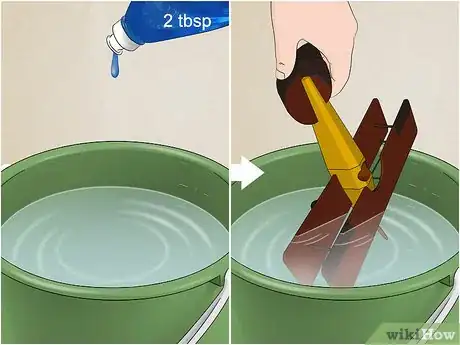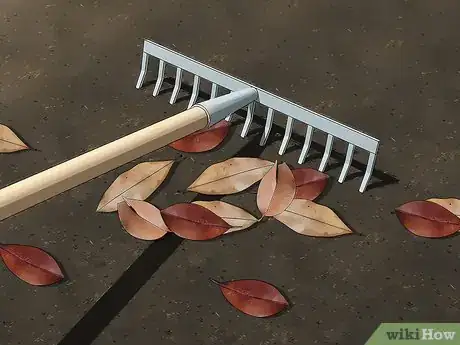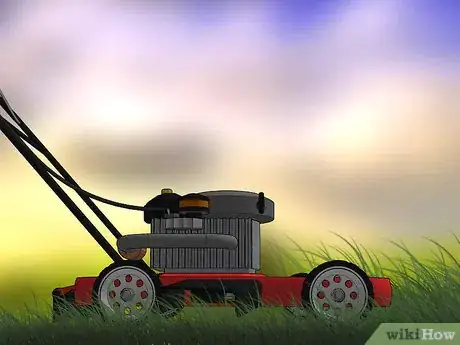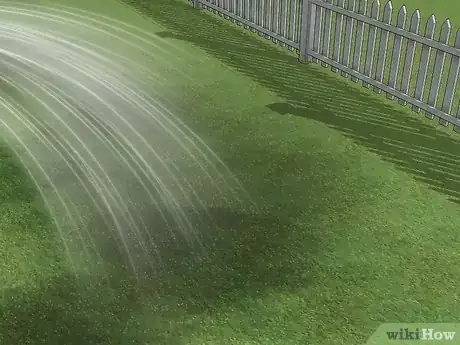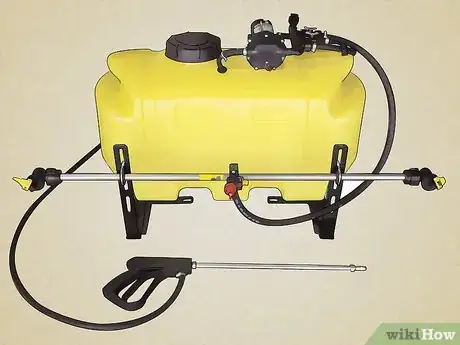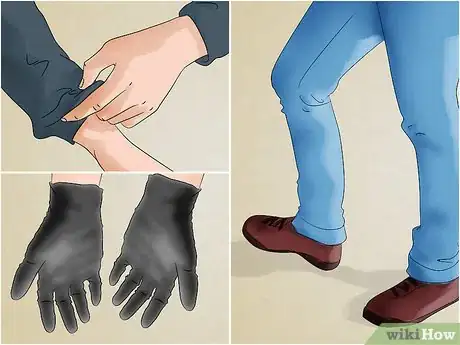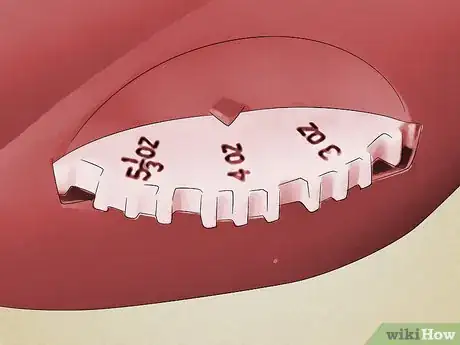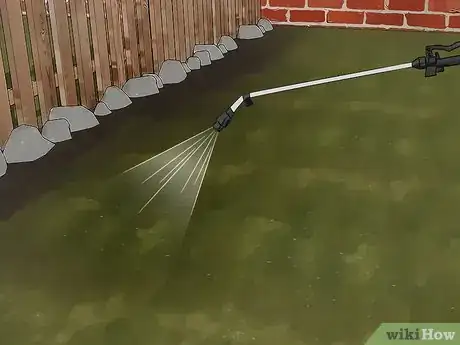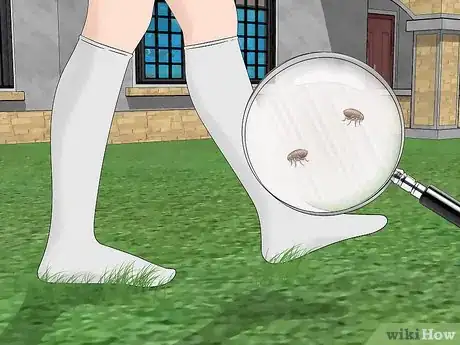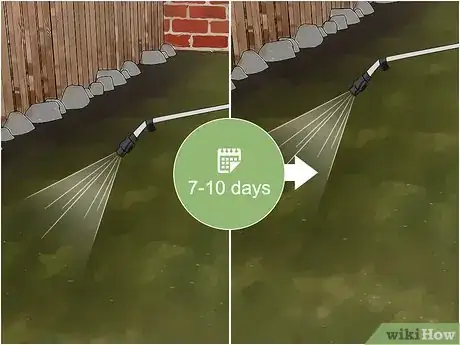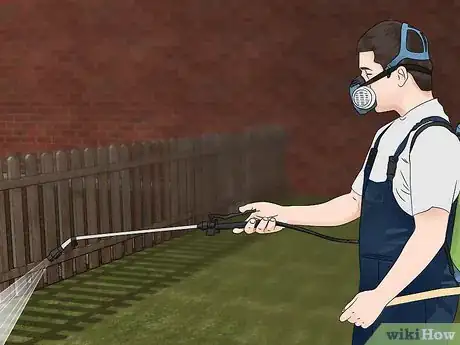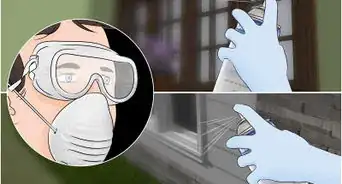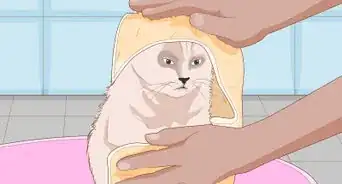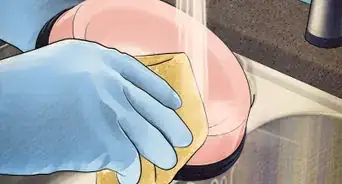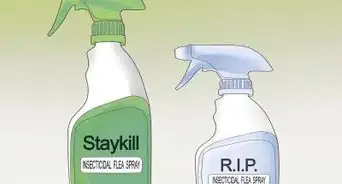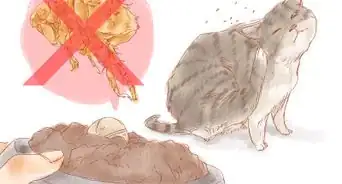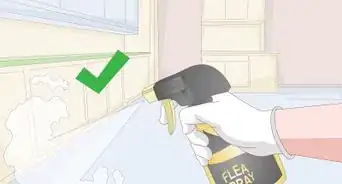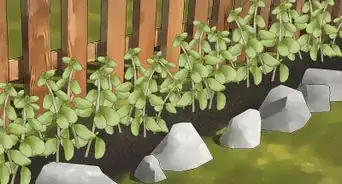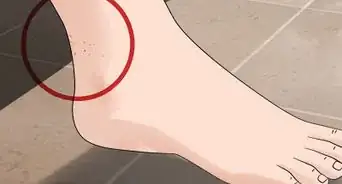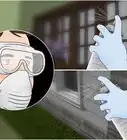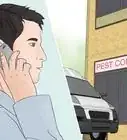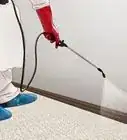This article was co-authored by Chris Parker. Chris Parker is the Founder of Parker Eco Pest Control, a sustainable pest control service in Seattle, Washington. With over seven years of experience, Chris specializes in Integrated Pest Management and doesn’t use any chemicals for pest removal. He offers removal services for ants, rodents, fleas, spiders, wasps, and more. Chris is a certified Commercial Pesticide Applicator in Washington State and received his bachelor’s from the University of Washington.
There are 9 references cited in this article, which can be found at the bottom of the page.
This article has been viewed 17,330 times.
Tiny as they are, fleas a major nuisance. If you have an outdoor infestation on your hands, mow your lawn and clear out leaves or other debris. Thick grass and damp, shaded areas allow fleas to hide and breed. After cleaning your yard, apply an insecticide with a hose sprayer. Focus on those damp, shaded spots and areas your pets frequent. You’ll most likely have to apply insecticide again every 7 to 10 days for up to 8 weeks. To prevent reinfestation, treat outdoor areas, interior spaces, and your pets simultaneously.
Steps
Cleaning Your Yard
-
1Wash toys and objects that might carry fleas. Collect bats, balls, frisbees, and other objects to keep them away from insecticide and to clear space for mowing. If you’re concerned that toys or other objects have fleas, wash them with soap and hot water or soak them in a bucket overnight.[1]
- If you're soaking them, add 1–2 US tbsp (15–30 ml) of dish soap to the bucket.
- The dish soap will increase the water’s surface tension and help prevent any fleas from escaping.
-
2Remove leaves and other debris. Rake up leaves and other organic matter, and pay particular attention to flower beds, beneath bushes, and other nooks and crannies. Look for any spots that might provide a damp, shady environment for fleas to multiply.[2]
- Keep in mind cats and other animals can carry fleas to overhead areas. Clean your gutters, tops of sheds, and other spots that might harbor fleas.[3]
Advertisement -
3Mow your lawn and collect the clippings. If you have a lawn, regular mowing is a key to overall flea control. Additionally, mowing before applying an insecticide will help ensure the product comes into contact with as many fleas, eggs, and larvae as possible.[4]
- Be sure to use a bag to catch clippings or rake them up after mowing. Leaving behind clumped clippings creates damp, shady spots that allow fleas to hide and breed.
- Keeping your grass trimmed short will help prevent flea infestations. A well-maintained lawn that gets ample sun is an inhospitable environment for fleas.[5]
-
4Water the yard thoroughly 24 hours before spraying with insecticide. After cleaning, give your yard a good soak. Saturating your yard will help encourage pupae to hatch into adults. Since their casings are watertight, pupae are tough to kill with insecticides.[6]
- Soaking might drown some adult fleas and larvae, too.
Applying Insecticide
-
1Choose a hose spray insecticide labeled for the entire flea life cycle. Purchase a broadcast spray product that connects to a hose. Make sure its label indicates it kills eggs, larvae, pupae, and adult fleas. Look for products that contain either chlorpyrifos or permethrin, which are more effective against fleas.[7]
- Spraying the product with a hose will give you more volume and coverage than a pump spray application.
- Find a product that comes in its own hose spray container. That way, you won’t need to purchase a separate hose sprayer or worry about proper calibration and dilution.
- Check the label to see how much area an insecticide covers by volume.
- Keep in mind insecticide will also kill any beneficial insects in your yard.
-
2Wear long sleeves, pants, sturdy shoes, and gloves. Try not to leave any areas of skin uncovered when you spray insecticide. At a bare minimum, wear long sleeves, pants, socks, and closed-toed shoes. Don’t wear flip flops, sandals, or shoes made out of fabric or mesh.[8]
- Even if your product's instructions don't advise wearing a respirator or mask, you should wear one to avoid inhaling harmful chemicals.[9]
- It’s also wise to wear work gloves and protective eye wear.
-
3Calibrate your hose sprayer, if necessary. If you need to pour your product into a separate hose sprayer, choose a sprayer with a dial that calibrates the dilution rate. The insecticide’s instructions will list a recommended dilution rate. Set your hose sprayer’s dial to the appropriate setting so the product mixes with water at the right ratio.
- To make things easier, buy a product that comes in its own spray container that attaches to a hose.
-
4Focus on shady, damp areas and spots your pet frequents. Turn on your hose and squeeze the container’s trigger to begin spraying. The most important spots to treat are patches of dirt, under bushes, perimeters of buildings, and other areas that might collect moisture and get lots of shade. If you have pets, you’ll also need to pay special attention to dog runs, kennels, houses, or any other areas your furry friends frequent.[10]
- Provided it gets good sunlight, you won’t need to spray your entire yard.
-
5Stay off the treated area for 4 to 6 hours. Let everyone in your household know that they’ll need to stay away from treated areas until the insecticide dries. Make sure to keep pets and children away from treated areas.[11]
Keeping the Area Flea-Free
-
1Treat pets, interiors, and outdoor areas at the same time. If you have pets, give them a flea bath and get a flea control treatment from the vet that's designed for their species and size. If possible, limit the amount of time your pet spends outside. Vacuum carpets, mop hard floors, and clean clothes and bedding in your washer’s hot water cycle. If the infestation is severe, you may also apply diatomaceous earth or an insecticide.[12]
- If you don’t treat all infested areas, fleas from inside or on your pet could just reinfest outdoor areas after you applied insecticide.
- Use regular flea and tick prevention on your pet, like a monthly pill you get from your vet.[13]
-
2Walk around in long, white athletic socks to check for fleas. The best way to check for fleas is to go outside wearing white socks pulled up to your knees. Walk over damp, shady spots and areas your pets frequent, which are most prone to flea infestation. You’ll be able to gauge the infestation by the number of fleas you see on the socks.[14]
- Take your socks off before going back into the house, especially if they’re covered with fleas.
- If necessary, throw the socks out. You could also spray them with mosquito repellent that contains DEET, or soak them overnight in soapy water.
-
3Apply an additional treatment as directed on the label. Typically, you'll need to apply a flea product more than once to make sure you kill fleas that hatch after the initial treatment. However, different products will have different recommendations for how often to re-use them.[15]
- For instance, some indoor pesticides may need to be reapplied every 14 days.
-
4Keep outdoor areas clean and well-maintained. Continue to mow your lawn regularly, collect grass clippings, and rake up leaves and organic debris. Maintaining your yard will remove hospitable environments and keep fleas from breeding.[16]
-
5Periodically apply an insect growth regulator (IGR). An insect growth regulator is a hormone that disrupts the flea life cycle. Spray an outdoor IGR 3 times a year to prevent infestations. Schedule the first application at the start of your area’s flea season.[17]
- Fleas can pose a threat year-round in most areas, but activity peaks during warmer months.
- In colder climates, such as Canada and northern portions of the United States, peak season is April or May through November.
- Peak activity is between February or March and December in milder climates, and lasts year-round in warm climates, such as the southern United States.
-
6Consult a professional if necessary. You might need a professional if you don’t want to apply insecticides yourself or can’t eliminate the infestation on your own. If you try dealing with it yourself and don’t have any luck by 8 weeks, contact a local exterminator.[18]
- Even if you’re dealing with a stubborn infestation, ask your exterminator to use the least toxic products available, especially if you have children or pets.
Expert Q&A
Did you know you can get expert answers for this article?
Unlock expert answers by supporting wikiHow
-
QuestionShould I treat my whole yard for fleas?
 Chris ParkerChris Parker is the Founder of Parker Eco Pest Control, a sustainable pest control service in Seattle, Washington. With over seven years of experience, Chris specializes in Integrated Pest Management and doesn’t use any chemicals for pest removal. He offers removal services for ants, rodents, fleas, spiders, wasps, and more. Chris is a certified Commercial Pesticide Applicator in Washington State and received his bachelor’s from the University of Washington.
Chris ParkerChris Parker is the Founder of Parker Eco Pest Control, a sustainable pest control service in Seattle, Washington. With over seven years of experience, Chris specializes in Integrated Pest Management and doesn’t use any chemicals for pest removal. He offers removal services for ants, rodents, fleas, spiders, wasps, and more. Chris is a certified Commercial Pesticide Applicator in Washington State and received his bachelor’s from the University of Washington.
Founder, Parker Eco Pest Control
-
QuestionHow do I get rid of fleas in my yard?
 Chris ParkerChris Parker is the Founder of Parker Eco Pest Control, a sustainable pest control service in Seattle, Washington. With over seven years of experience, Chris specializes in Integrated Pest Management and doesn’t use any chemicals for pest removal. He offers removal services for ants, rodents, fleas, spiders, wasps, and more. Chris is a certified Commercial Pesticide Applicator in Washington State and received his bachelor’s from the University of Washington.
Chris ParkerChris Parker is the Founder of Parker Eco Pest Control, a sustainable pest control service in Seattle, Washington. With over seven years of experience, Chris specializes in Integrated Pest Management and doesn’t use any chemicals for pest removal. He offers removal services for ants, rodents, fleas, spiders, wasps, and more. Chris is a certified Commercial Pesticide Applicator in Washington State and received his bachelor’s from the University of Washington.
Founder, Parker Eco Pest Control
References
- ↑ http://fleascience.com/flea-encyclopedia/life-cycle-of-fleas/adult-fleas/how-to-kill-fleas/do-fleas-drown-in-water/
- ↑ http://pods.dasnr.okstate.edu/docushare/dsweb/Get/Document-2681/VTMD-9121web2014.pdf
- ↑ https://extension.msstate.edu/sites/default/files/publications/publications/p2597_0.pdf
- ↑ https://agrilife.org/aes/files/2014/06/Controlling-Fleas-2.pdf
- ↑ Chris Parker. Founder, Parker Eco Pest Control. Expert Interview. 15 January 2021.
- ↑ http://www.pestproducts.com/fleasoutside.htm
- ↑ https://entomology.ca.uky.edu/ef602
- ↑ https://agrilife.org/aes/files/2014/06/Controlling-Fleas-2.pdf
- ↑ https://extension.psu.edu/respiratory-protective-devices-for-pesticides
- ↑ http://edis.ifas.ufl.edu/ig087
- ↑ http://edis.ifas.ufl.edu/ig087
- ↑ Chris Parker. Founder, Parker Eco Pest Control. Expert Interview. 15 January 2021.
- ↑ Chris Parker. Founder, Parker Eco Pest Control. Expert Interview. 15 January 2021.
- ↑ https://entomology.ca.uky.edu/ef602
- ↑ https://agrilife.org/aes/files/2014/06/Controlling-Fleas-2.pdf
- ↑ Chris Parker. Founder, Parker Eco Pest Control. Expert Interview. 15 January 2021.
- ↑ https://entomology.ca.uky.edu/ef602
- ↑ https://agrilife.org/aes/files/2014/06/Controlling-Fleas-2.pdf
